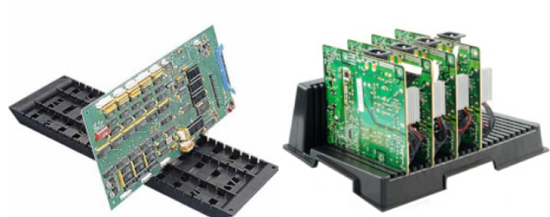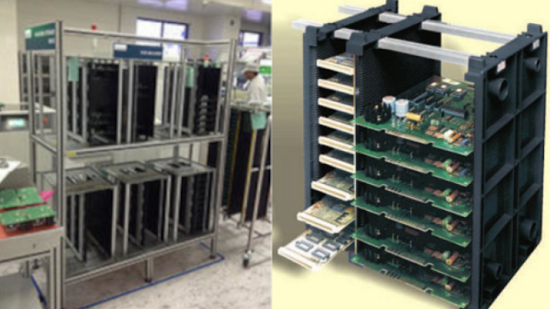How to Maximizing PCB Assembly Shelf-Life?
How to Maximizing PCB Assembly Shelf-Life?
For customers of OEMs or end-users, circuit boards must function as intended, and reliably so, over their operational lifetimes. Therefore, OEMs must look at the state of the PCB assembly even beyond their production. This is because, in many cases, OEMs need to store assembled boards for some time before deploying them. In several cases, this period of storage may even extend to a few years. Unless they follow proper storage procedures, circuit boards may face several types of damages and OEMs may not be able to satisfy their customers.

Shelf-Life of Components and Common Threats
The two major threats to the shelf-life of components are:
--Component Selection Threats
--PCB Assembly Storage Threats
Component Selection Threats
Threats to the shelf-life of components on the board and their ability to perform reliably once the OEM has deployed the board, depends to a large extent on the development process of the board. Therefore, designers should be careful when selecting components and avoid the following:
1.Counterfeit Components:
Counterfeit components are a major threat to the electronics industry. Unscrupulous suppliers supply components they have purchased under shady deals, restamped components, and rejects from manufacturers, as genuine components.
2.Inferior Components:
Along with the supply of good and reliable components, a parallel grey market exists for substandard and inferior components, Designers must be careful
and ensure that they source their components only from reputable suppliers to meet the functional and operational requirements for their design.
3.Obsolete Components:
Designers often overlook the threat of obsolescence, and select components that are at or near the end of their life-cycle curve. Overlooking the obsolescence of a component may involve looking for a substitute or in extreme cases, having to redesign the board at some point during its lifetime.
The above threats are all related to the way the OEMs handle their supply chain management. It is possible to avoid the threats by sourcing components only from known reliable suppliers and ensuring availability and traceability of component data.
PCB Assembly Storage Treats
Assembled PCBs undergo storage at three stages before their deployment. The stages are:
--Pre-Assembly at the Contract Manufacturer
--Post-Assembly during shipping
--Pre-Deployment at the OEM
Pre-Assembly:
Contract manufacturers maintain boards under various stages of work-in-progress before the assembly process completes. During this pre-assembly stage, partly finished boards travel between different stations where operators add on their part of the activity.
During this period, it is likely that operators handle the boards physically, which can cause contamination from body oils, atmospheric dirt, dust, and much
more. A greater danger in this period is damage from Electro Static Discharge or ESD. Accumulation of static electricity due to various reasons can discharge through the components on the board, damaging them partially or fatally.
To avoid damage during the pre-assembly stages,we maintain clean rooms for assembly, our operators wear protective clothing, and we have anti-static
measures in place.
Post-Assembly:
During shipping it is important to protect the boards from the vagaries of nature, such as temperature fluctuations, ingress of dust and moisture, and physical damage from shock and vibration.
Pre-Deployment:
The OEM may have many reasons for not deploying the assembled boards immediately after receiving them. These may include delay in receiving cabinets, firm orders, or others. As a result, the assembled boards may spend a considerable amount of time in storage before the OEM finally deploys them.Unless the OEM stores implements and follows PCB assembly storage guidelines, the board, and components on it may fail, and may not function properly on deployment.
PCB Storage Guidelines
In our company,we maintain and implement the following guidelines for ensuring the reliability of our assembled PCBs:
--Source components only from secure suppliers
--Follow standard anti-static procedures for PCB and component handling
--Use solder masking and appropriate surface finish
--Apply cleanliness specifications for assembly stages
--Apply conformal coating (with customer’s consent)
--Store and ship assembled PCBs in moisture barrier bags along with desiccant inside
--We comply with the following standards for PCB handling and storage:
*IPC/JEDEC J-STD-033C-1
*IPC/JEDEC J-STD-020E
*IPC 1601A

PCB Blog
Contact Us
E-mail: [email protected]
E-mail: [email protected]
Skype: [email protected]
Whatsapp: +86 15012972502
Add: 2F, BUILDING H, WANDA INDUSTRIAL ZONE, ZHOUSHI ROAD, LANGXIN COMMUNITY,SHIYAN STREET, BAO 'AN DISTRICT, SHENZHEN, GUANGDONG, CHINA







 Skype Chat
Skype Chat WhatsApp
WhatsApp  Mail inquiry
Mail inquiry